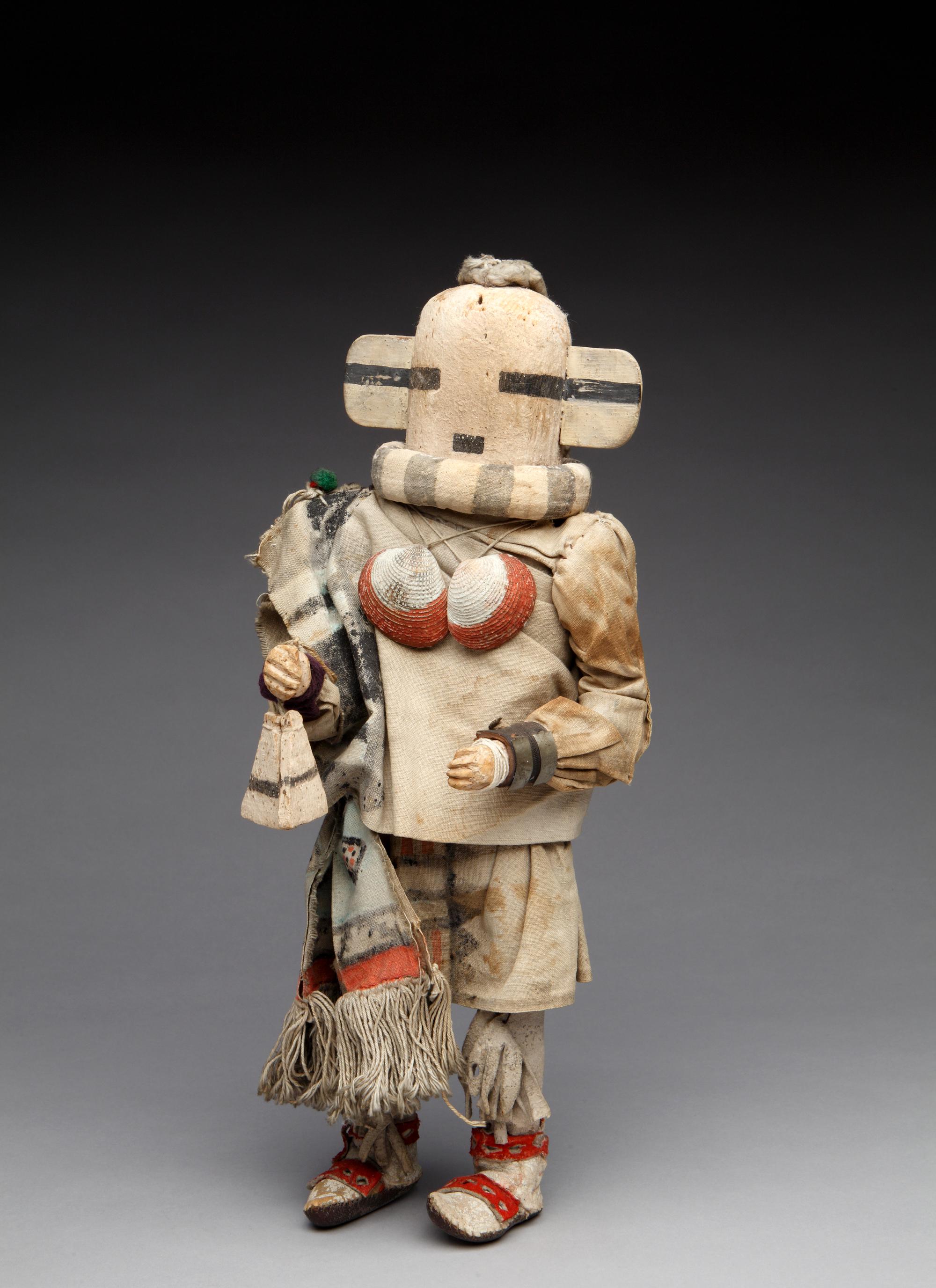
Front of kokko.
Photograph by Addison Doty. Copyright 2014 School for Advanced Research.
Hututu kokko we'ha | Hututu kokko figure
Date: c. 1900
Artist or Maker: Unknown
Dimensions:
Overall: 39.4 cm (15 1/2 in.)
Medium: wood | paints | shell, chione | leather, buckskin | cotton | metal, iron
Credit Line: Gift of Amelia Elizabeth White, 1961.
Place Made:
Zuni Pueblo, McKinley County, New Mexico, Southwest, United States, North America
Object Number: IAF.C294
Not on view
Tribal Collection Review RemarksJim Enote and Octavius Seowtewa during collection review visit April 6 and 7, 2009 (Events Record “Collection Review: Zuni Tribe, Review 1”): Hututu is associated with IAF.C252 (Yam Huk Du), who accompanies him to Shalako. Hututu is part of the Long Horn group (which is a group consisting of six kokko).
ADDITIONAL INFORMATION: Jim Enote and Octavius Seowtewa during collection review visit April 10 and 11, 2014 (Events Record “Collection Review: Zuni Tribe, Review 13”): This kokko figure is carved from wood, possibly pine. The paints used on it appear to be a combination of commercial paints and natural pigment paints. The head and face are painted white. The eyes and mouth are black. The rounded ears are white with a black stripe though the middle. The rope of cotton affixed to the top of the head was rolled by hand. The back of the head is not painted because it’s missing a part that would have served as its hair.
Instead of a ruff, this figure has a black and white striped collar that wraps around the base of the face. It wears two white clamshells with a wide red stripe at the bottom around its neck. The clamshells are strung on white cotton string.
The figure is clothed with a think white cotton cloth for its shirt and kilts. It wears a white shirt with a kilt on top, fastened over its right shoulder. It wears another white cotton kilt around its waist. Both kilts are painted with designs meant to indicate embroidery. It wears a white cotton sash with long fringe, tied so that both ends fall on the figure’s right side. The sash is painted blue, red, black and white to indicate embroidery like that on a brocade sash.
On its right wrist, it wears a black leather bow guard with tin decoration on it. There is a white cotton string wrapped around the left hand. There is a purple yarn wrapped around the right wrist. It holds three wooden, painted triangles in the right hand, meant to represent deer scapulae.
The figure’s legs are painted white. It wears white buckskin, fringed wraps on its legs, above the moccasins. The moccasins are handmade and sewn with sinew. The tops of them are painted white or light blue. There is a red flap over top of each foot, and a band of red at the top of moccasins. The soles are black. (The dancer would wear the red, yellow, blue type of ceremonial moccasins.)
There are several pieces missing from the kokko’s outfit or that are different as compared to what the dancer would wear. The white rope on top of the head should drape behind the ears in an upside-down V shape. (IARC staff moved the rope so that it now falls behind the ears. It was re-photographed this way to show the correct arrangement of the rope.) The back of the head should be covered with mohair that is dyed black. It would come down to the black and white striped collar. The deer scapulae in the right hand should be tied onto a stick that the dancer would hold. There should be a bow with two or three arrows in the left hand. The ears on this piece may not have been replaced, as Bettina Raphael surmised in her 2002 conservation treatment report; the ears are correct for this dancer and may be original to the piece.
In Collection(s)
The Indian Arts Research Center, in collaboration with Native American community scholars, strives to present accurate collections records. Records may be updated as new information becomes available and is reviewed with the Native American community having cultural affinity to particular items. Please write to iarc@sarsf.org if you have questions or concerns related to the documentation.


